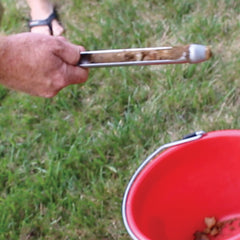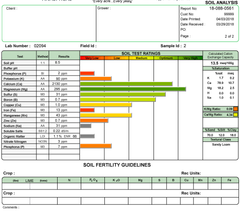Soil Testing & Fertility
Soil testing is an important first step in developing a lawn care program. For some nutrients, it is the only way you can accurately determine how much fertilizer your lawn needs. For a nominal fee, The Mill offers a lab testing service for a standard soil test for phosphorus, potassium, and lime requirements. More comprehensive soil analyses are available upon request and if desired, The Mill can schedule a visit to inspect the lawn, pull samples and develop a multi-season plan for you.
A soil test program involves sampling, laboratory analysis, interpretation, and recommendations. The results obtained from a soil test are only as good as the sample submitted. Sampling directions vary from lab to lab, so follow instructions on the test kit carefully. Instructions should tell you how many subsamples are required per test, the sampling pattern, the sampling depth, and whether thatch should be included in the sample.
Sampling instructions suggest collecting 12 or more subsamples per location in a regular grid pattern. If the site varies in soil type, previous lime or fertilizer treatment, or other past maintenance practices, take separate samples accordingly. Test kit instructions suggest sampling soil 3 to 4 inches in depth and discarding thatch. Mix all subsamples together to make one sample, then take about 1/3 pint of this mix and place it in the mailing kit. Be careful not to contaminate the sample with lime or fertilizer during sampling and mixing.

Typically, soil tests should be taken every year or at least two out of three years. If you wish to monitor nutrient levels over many years, take the samples at about the same time of year every time you sample. Always test the soil before establishing or renovating an area of your yard.
Interpretation of soil test results allows your nutrient levels to be placed into categories such as low (deficient), adequate, or high based on the research and experience of turfgrass specialists. Recommendations are usually provided as pounds of fertilizer per 1,000 square feet (also based on research and the experience of turfgrass specialists). Make sure you understand the recommendations before applying the fertilizer; that is, determine whether the recommended amount of fertilizer is to be applied in several separate applications or provided in one application.

Recommendations offered by The Mill’s lab testing service are based on research with turfgrass in MD/PA and the experience of turf specialists at The Mill. It is not surprising that recommendations from other states differ since soils, research procedures, and specialists’ opinions differ from those of The Mill’s Specialists. To maintain consistent soil test results and recommendations, work with the same lab that is convenient to use and whose recommendations you can understand.
Once the lawn has been established there are regular management practices that must be followed to ensure lawn quality.
By following the principles outlined here, many potential problems can be avoided. The most common causes of poor lawns include:
- Poorly adapted species or cultivar(s) were planted
- Improper time of planting seed
- Improper use of fertilizers and limestone
- Poor watering practices or poorly drained soils
- Too much traffic or compaction of soil
- Too much shade
- Mowing the lawn too closely or too infrequently
- Poor weed control practices
- Failure to replant areas damaged by pests or stress
- Uncertified seed or sod were used
























